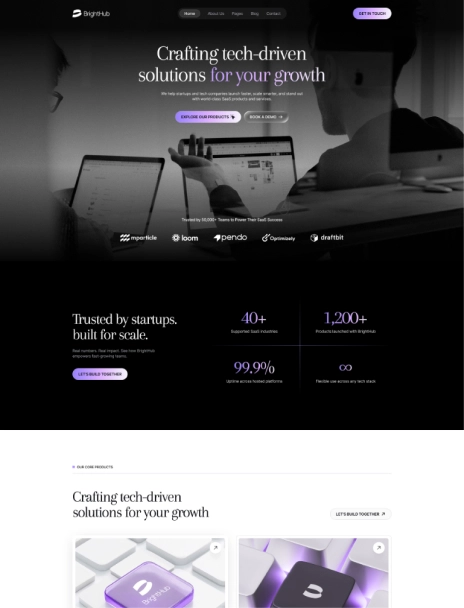Understanding UGC Ads: A Comprehensive Guide

Introduction
In the ever-evolving world of digital marketing, User-Generated Content (UGC) ads have emerged as a powerful tool for brands to connect with their audiences. But what exactly are UGC ads, and why are they becoming so important? Let’s dive in and explore this fascinating topic.
The Evolution of Advertising
Traditional Advertising
Once upon a time, advertising was all about TV commercials, billboards, and print ads. Brands told consumers what to think, and that was that.
Digital Advertising
Then came the digital revolution. Ads started popping up on websites, social media, and email inboxes. The interaction level increased, but something was still missing.
The Rise of UGC Ads
Enter UGC ads. These are ads created by consumers themselves. They bring a fresh, authentic perspective that traditional and digital ads often lack.
Defining UGC (User-Generated Content)
What is UGC?
User-Generated Content is any content—text, videos, images, reviews—created by people rather than brands. It’s the digital equivalent of word-of-mouth.
Examples of UGC
Think of a selfie with a new pair of sneakers, a tweet raving about a restaurant, or a YouTube unboxing video. These are all examples of UGC.
UGC vs. Traditional Advertising
Key Differences
Traditional ads are brand-created and often feel polished and impersonal. UGC ads, on the other hand, are raw and real, created by everyday people.
Advantages of UGC Ads
UGC ads come with a slew of benefits, such as increased trust, higher engagement, and cost-effectiveness. People tend to trust other people more than they trust brands.
Benefits of UGC Ads
Authenticity and Trust
UGC ads resonate because they’re authentic. When someone sees a peer using a product, it’s more convincing than a brand’s pitch.
Cost-Effectiveness
Brands save on production costs because the content is created by users. It’s a win-win situation!
Enhanced Engagement
UGC ads often get more likes, shares, and comments. People love seeing real-life experiences.
SEO Benefits
Search engines favor fresh, unique content. UGC can help improve your site’s SEO rankings.
Types of UGC Ads
Social Media Posts
Instagram, Facebook, and Twitter are goldmines for UGC. A simple tag or hashtag can turn a user’s post into an effective ad.
Reviews and Testimonials
Positive reviews on Google or Yelp can be powerful UGC ads. They build trust and credibility.
Blogs and Articles
User-written blogs and articles about your brand can attract new customers and enhance your online presence.
Video Content
From unboxing videos to tutorials, video content is highly engaging and shareable.
How to Encourage UGC
Incentives and Rewards
Offer discounts, freebies, or loyalty points to encourage users to create content.
Contests and Challenges
Host contests that prompt users to share their experiences with your product. Think Instagram photo challenges or TikTok dance contests.
Community Building
Create a strong community around your brand. Engaged customers are more likely to create content.
Platforms for UGC Ads
With its visual focus, Instagram is perfect for UGC. Use hashtags and tags to find user content.
Facebook’s vast user base and varied content types make it a versatile platform for UGC.
YouTube
Video content thrives on YouTube. Encourage users to post reviews, tutorials, and more.
TikTok
TikTok’s short, engaging videos are ideal for UGC. Start trends and challenges to boost content creation.
Creating Effective UGC Ads
Setting Clear Objectives
Know what you want to achieve with your UGC ads. Is it brand awareness, engagement, or sales?
Identifying Target Audience
Understand who your audience is and what kind of content they like to create and consume.
Selecting the Right Platform
Choose the platform that best suits your brand and audience. Not all UGC works everywhere.
UGC Ads Best Practices
Authenticity Over Perfection
Encourage users to be themselves. Authentic content resonates more than polished ads.
Leveraging Influencers
Work with influencers who align with your brand. They can drive UGC and amplify your message.
Monitoring and Moderation
Keep an eye on the content being created. Ensure it aligns with your brand values and message.
Case Studies of Successful UGC Ads
GoPro
GoPro’s entire marketing strategy revolves around UGC. Users share their adventures using GoPro cameras, creating compelling ads.
Coca-Cola
Coca-Cola’s “Share a Coke” campaign encouraged users to share photos of personalized Coke bottles, boosting engagement and sales.
Starbucks
Starbucks’ “White Cup Contest” invited customers to doodle on their cups and share photos, leading to high levels of engagement.
Measuring the Success of UGC Ads
Key Metrics to Track
Track engagement metrics like likes, shares, comments, and reach. Also, monitor conversion rates and sales.
Tools for Measurement
Use tools like Google Analytics, Hootsuite, and social media insights to measure the impact of your UGC ads.
Challenges of UGC Ads
Maintaining Quality
Not all user content will be high-quality. Set guidelines and encourage best practices.
Legal Considerations
Ensure you have the right to use user-generated content. Get explicit permission where necessary.
Managing Negative Feedback
Not all UGC will be positive. Have a plan in place to address negative feedback constructively.
Future of UGC Ads
Trends to Watch
Look out for trends like augmented reality (AR) and virtual reality (VR) content, and the increasing role of micro-influencers.
The Role of AI and Automation
AI can help in moderating content and automating UGC ad creation, making the process more efficient.
Conclusion
UGC ads are transforming the advertising landscape. They bring authenticity, engagement, and cost savings that traditional ads can’t match. As the digital world evolves, UGC will only grow in importance, offering brands a dynamic way to connect with their audiences.













 Jun 19,2024
Jun 19,2024  By instainnovate
By instainnovate 

